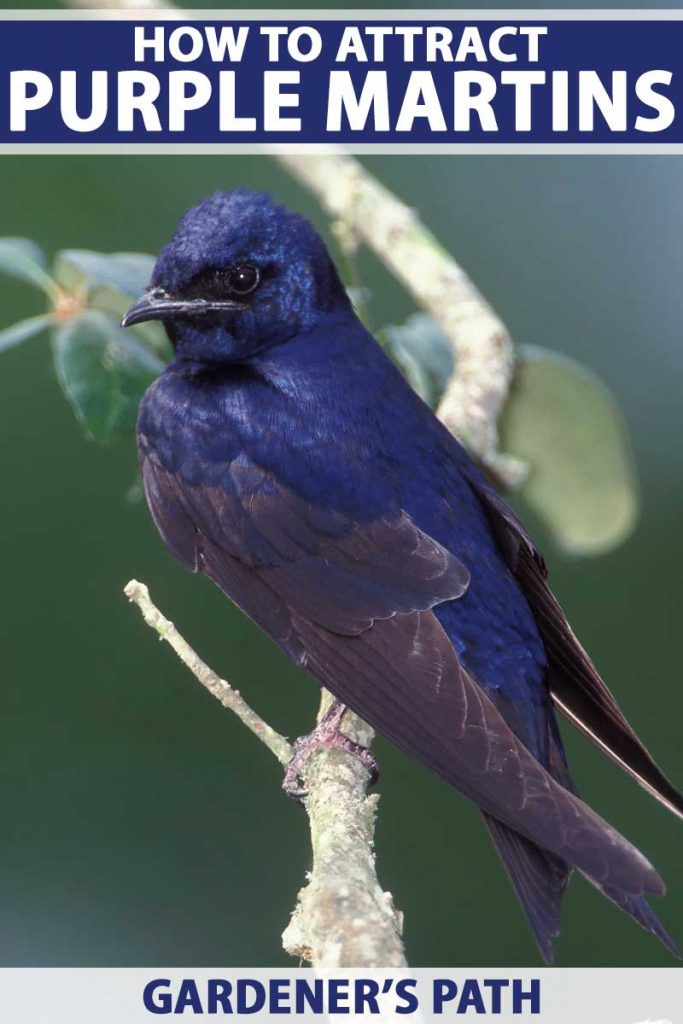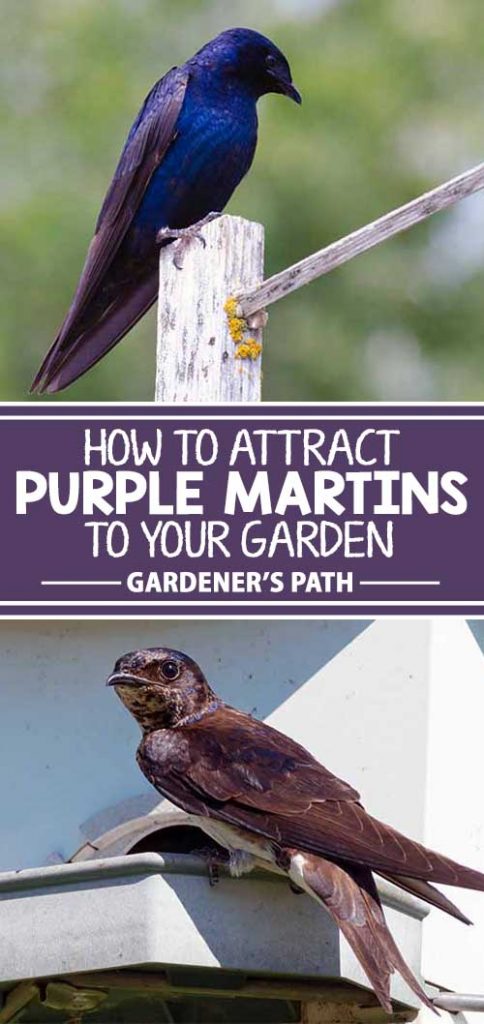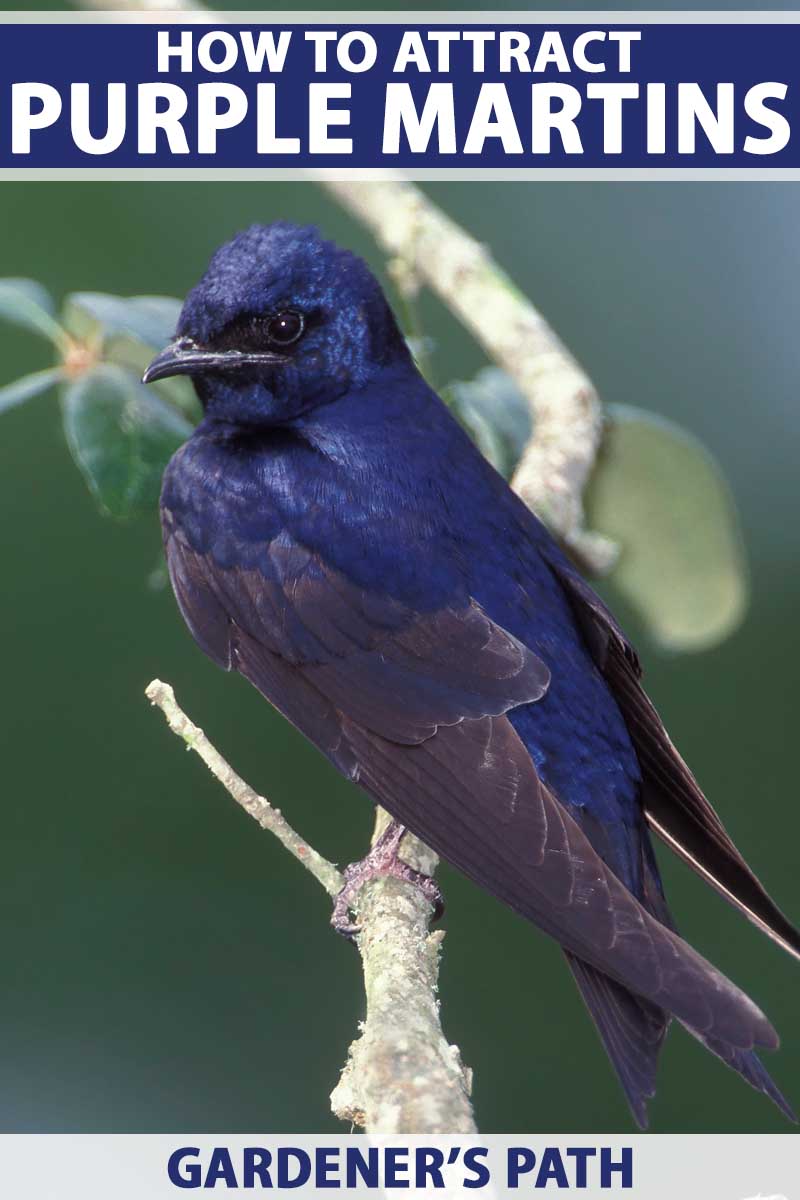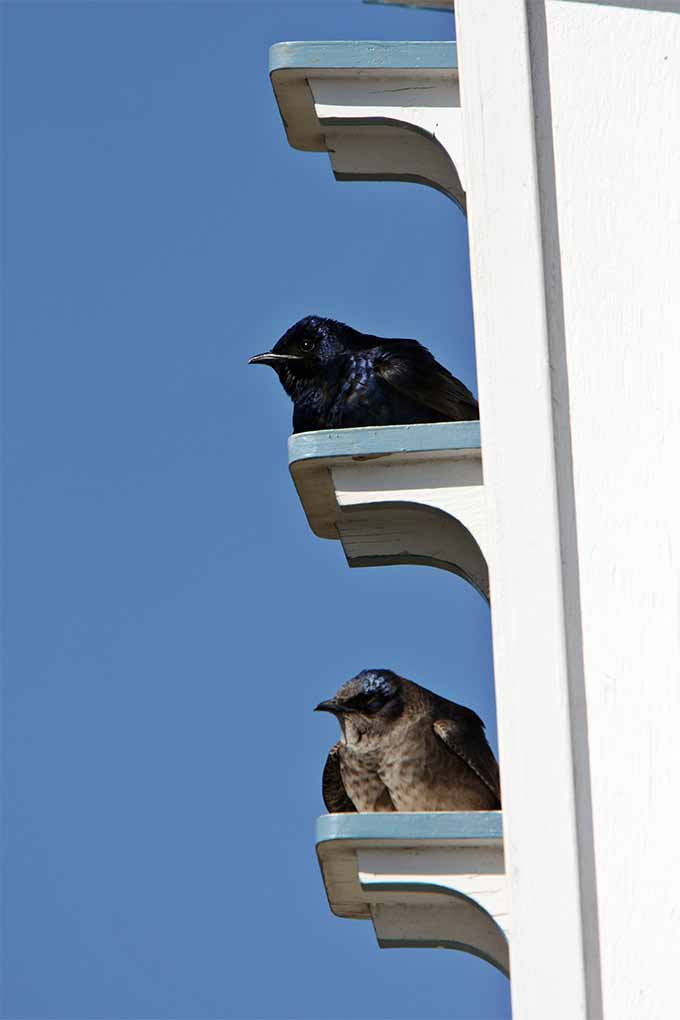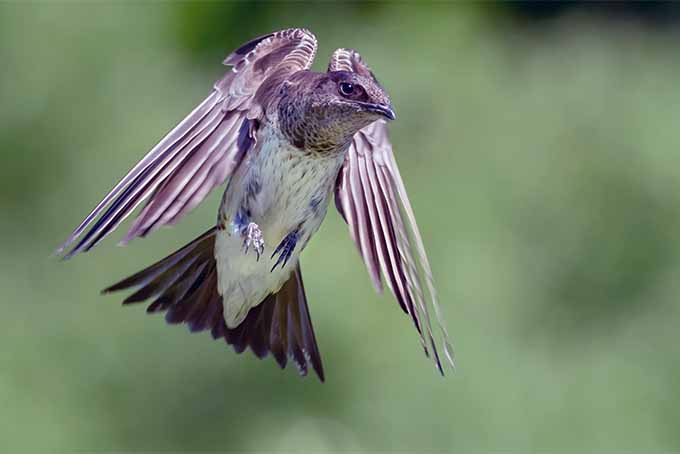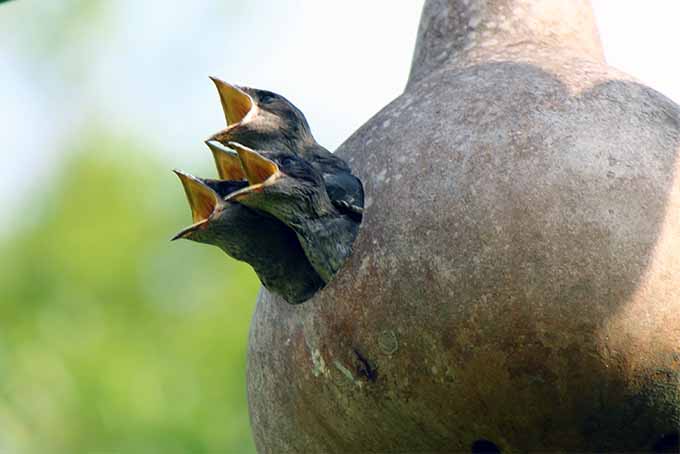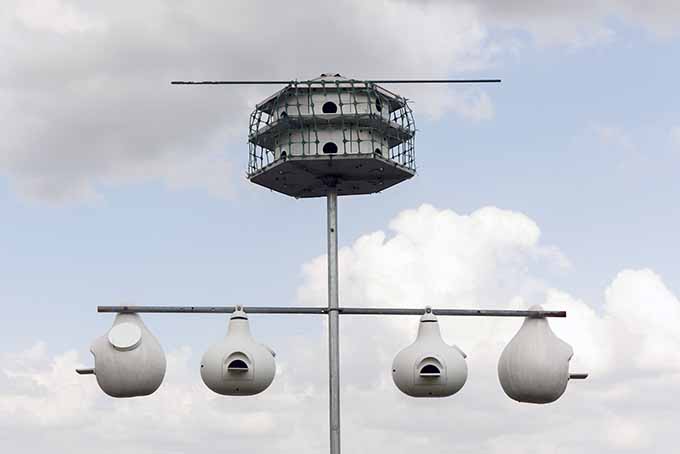For purple martins, those tasty insects and summer lodgings could be in your yard, if you offer these attractive and melodious birds a proper residence. With the exception of a limited range in the far northwest, the birds have crossed the western United States off their summer destination list, though they still return each spring to the eastern part of the country. Their arrival is eagerly anticipated by homeowners who appreciate the birds’ entertaining and useful attributes, some hoping to take advantage of the birds’ reputation for enjoying thousands of mosquitoes per day. But more on that later. We link to vendors to help you find relevant products. If you buy from one of our links, we may earn a commission.
Introduction: Meet the Martins
Purple martins are the largest member of the swallow family to call North America home. They’re nearly 8 inches long and have a wingspan of 15.4 to 16.1 inches. The species gets its name from the males — they sport deep blue-purple, iridescent feathers. The ladies wear considerably less showy brown-gray feathers.
These birds like nothing more than a tasty insect snack. According to the Audubon Society, they feed on a wide variety of flying insects, “including many wasps and winged ants, and some bees.” They also eat house flies and crane flies, beetles, moths, and butterflies. And while they do indeed eat mosquitoes, they do not consume the huge numbers the legends say they do. It takes a lot of effort to capture the number of mosquitoes that would equal a single moth, for example. So, like many of us, they are more inclined to go for the easy meal.
For the most part, they eat midflight, twisting their bodies and wings just so to corral their prey, earning their reputation as talented aerobatic artists.
Summertime All the Time
Obviously partial to warm weather, purple martins arrange their travel schedule so that they enjoy spring and summer in the northern hemisphere, and then head south to enjoy the warm season in the southern hemisphere as well. I mean, why not, right? That means they arrive in the southern U.S. as early as February and make it up north in May or June. While here in the U.S., their primary task is procreation, typically producing 4 or 5 eggs in a season.
Convincing these birds to expand their families in one’s backyard is a point of pride for many gardeners. They are appealing not only for reducing pesky insect populations, but also for their lyrical singing and playful flying style, both of which are a joy to behold. There’s yet another reason you might want to give these birds a place to roost; we’ll get to that later in the article.
The Right Lodging in the Right Location
Another Motivation: Save a Species
We told you we’d offer you another reason to invite this species to live with you. The few who do continue to visit the west nest in woodpecker holes and other natural nooks and crannies. But in the east, it’s up to us to give them a home.
You’ve probably seen those multi-housing units that rise from the earth on a very tall pole, in wide-open spaces. The birds like these condo-type units, or you can try a natural or manmade gourd with a doorway cut out, another preferred housing type. In fact, Native Americans long ago figured out that these purple fowl like gourd houses, and reportedly hung up hollow gourds around their villages to attract them. Some gardeners hang a combination of condos and gourds to ensure each pair of birds can find the home that’s just right for their family.Set up your housing units at any height between 10 and 20 feet, and at least 40 feet away from trees, houses, or other buildings that are taller than the height of the martin lodging. But don’t place them more than 100 feet away from human housing. Apparently they want to be close to us, just not too close. In the South, choose white or light-colored housing to reflect the heat of the sun and keep the nestlings cooler. For your own viewing pleasure, you may want to position the birds’ house in such a way that you can hear and see the creatures from your own comfortable roost, enjoying their songs and aerobatics.
Other Enticements
Ensuring the presence of a few other amenities will help convince these these birds to settle in your yard. These airborne critters drink and bathe in flight. So having open water somewhere nearby — within a half mile or so — will be a selling point. They don’t drink from bird baths.
Having bugs for them to eat is always good, and not much of a challenge, eh? You could offer your condos fully furnished — place 1 or 2 inches of nesting material in the bottom of each compartment. Just make sure it’s fresh, and not last season’s yucky leftovers. Some gardeners add purple martin decoys to attract the birds, and others play recordings of their “dawnsong” to entice the birds to their yard.
Keep the Interlopers Out and Other Housework
Unfortunately, martins aren’t the only species that will be interested in the wonderful housing you’ve erected. If you’re not careful, house sparrows and starlings will move into your carefully chosen condos. The only way to avoid this is to time the opening of your condos with precisely the time the martins are looking to settle down. This will vary regionally, of course, so check with local birders for more intel.
If the interlopers do move in, boot them out by removing their nesting materials. Take your bird houses down each fall — after they’ve left for Brazil and beyond — and thoroughly clean them out. Put them up again just in time to be ready for the next season’s arrivals. The new arrivals, by the way, will possibly be the same guests who stayed with you the previous season. They remember and come back. Sadly, populations of this species are declining. Why not do your part to help them rebound? It used to be that putting up purple martin houses was so common that John James Audubon looked for the houses to determine where he’d stay the night.
In 1831, he is said to have remarked, “Almost every country tavern has a martin box on the upper part of its sign-board; and I have observed that the handsomer the box, the better does the inn generally prove to be.” While these purple birds are not officially endangered, let’s not let them get to that point. The more of us (especially in the east) who put up welcoming lodging, the more the birds will flourish. Let’s give them a place to roost and have young and they will reward us with their songs and their beauty.
The Ornithological Fred Astaire
The purple martin is among America’s most popular feathered friends, according to the Audubon Society. Revered for their eating habits, and loved for their singing and aerial dancing, the bird is a favorite of many gardeners.
Did you enjoy this guide? Check out some of our other articles that might be of interest:
How to Build a Bat Box with DIY Instructions A Review of the National Audubon Society Birds of North America How to Attract Bats to Your Yard and Garden
Product images courtesy of Heath Outdoor Products, S&K Mfg., Uncredited photos: Shutterstock.
